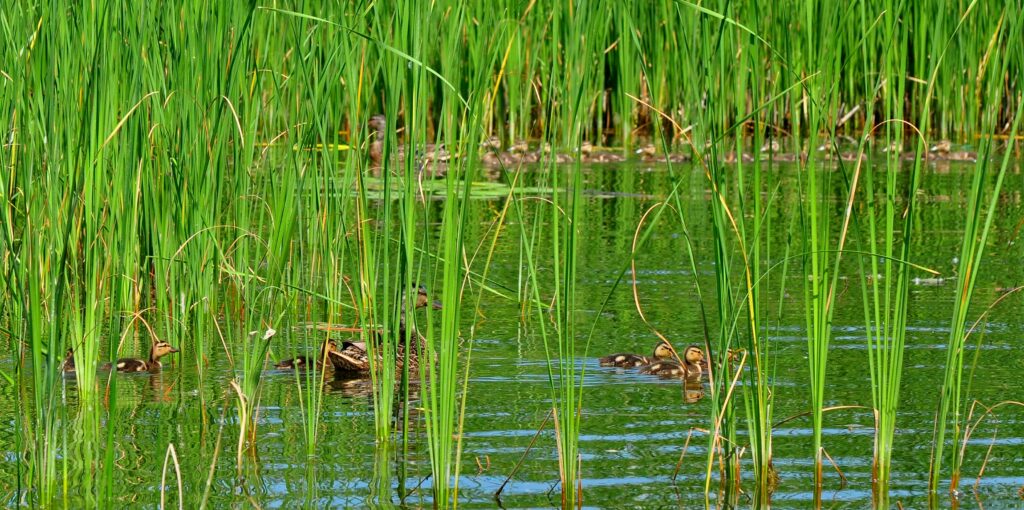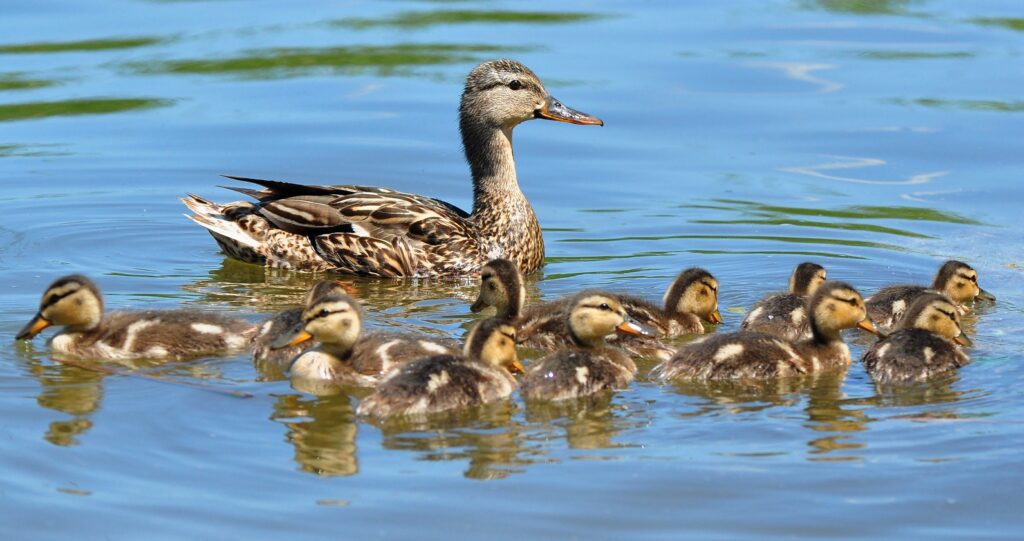Photography courtesy of Lowell Washburn, all rights reserved.
When leaves fall and autumn winds blow, Iowa duck hunters can anticipate a strong migration of southbound waterfowl during 2024. That’s the official assessment from this year’s North American Breeding Duck and Habitat Survey released earlier this week by the U.S. Fish & Wildlife Service.
Conducted every year since 1955, the continent-wide annual survey measures trends in duck breeding populations and monitors wetland [pond] indexes across the northern U.S. as well as for large portions of prairie and boreal Canada. This year, a total of 34 million breeding ducks were inventoried during spring surveys – an increase of 5 percent from 2023 but 4 percent below the 1955-2023 Long Term Average [LTA]. This is the first increase in the total number of breeding ducks occupying surveyed areas since 2015 – a gain attributed to drought breaking rainfall which fell on the northern prairies during late April and May. A total of 5.2 million spring ponds were counted across surveyed areas, an increase of 4 percent from 2023.

Species Highlights: A surveyed breeding population of 6.6 million mallard ducks was reported by the Fish & Wildlife Service during 2024 – an 8 percent increase from last year’s count, but down 16 percent from the LTA. Blue-winged teal populations fell by12 percent from 2023; and are ten percent below the LTA. By contrast, the number of green-winged teal jumped 20 percent from last year and are a full 38 percent above the average. The breeding population of lesser scaup [bluebills] rose by 16 percent but are 17 percent below the average. The number of breeding pintails dropped by 11 percent and remain a dismal 49 percent below the LTA.

In Iowa, drought-stricken wetlands were revived by much needed, gully-washing spring rainfall. Going into early fall, water levels in the state’s permanent marshlands and temporary potholes are excellent overall. Duck and goose production ranged from good to excellent across the state and anticipation is mounting as fall hunting seasons draw near. This year’s waterfowl seasons begin with a special teal season which opens on September 1.

Despite this year’s improved waterfowl forecast, Iowa hunters are advised not to count their ducks until they’re hovering above the decoys. For those of us sitting smack in the middle of the flyway, there are always plenty of uncertainties. As always, the ultimate success of Iowa’s fall duck season will hinge largely on developing fall weather patterns and upon the migratory whims of the birds themselves. One fact is certain though. When temperatures plummet and northern lakes begin to freeze, southbound waterfowl will encounter a vast improvement in the condition of Iowa wetlands. That, combined with a strong fall flight prediction, is a forecast that is sure to stir the blood of any

 Susan Judkins Josten
Susan Judkins Josten Rudi Roeslein
Rudi Roeslein Elyssa McFarland
Elyssa McFarland Mark Langgin
Mark Langgin Adam Janke
Adam Janke Joe Henry
Joe Henry Sue Wilkinson
Sue Wilkinson Tom Cope
Tom Cope Kristin Ashenbrenner
Kristin Ashenbrenner Joe Wilkinson
Joe Wilkinson Dr. Tammy Mildenstein
Dr. Tammy Mildenstein Sean McMahon
Sean McMahon